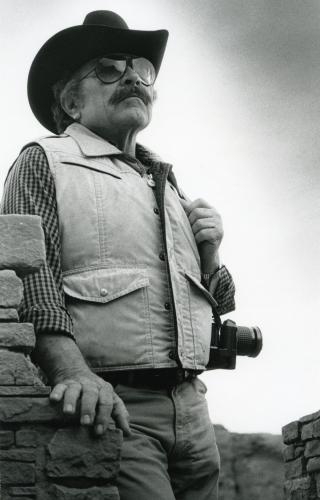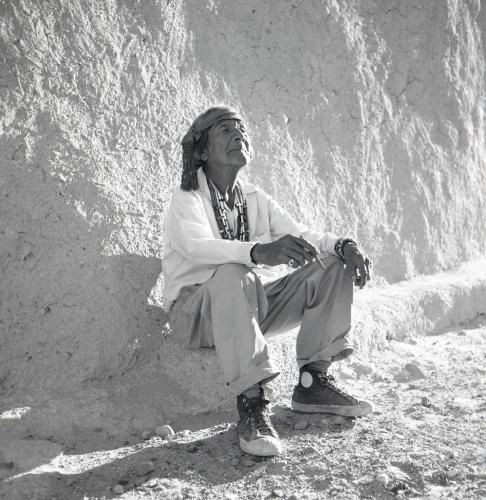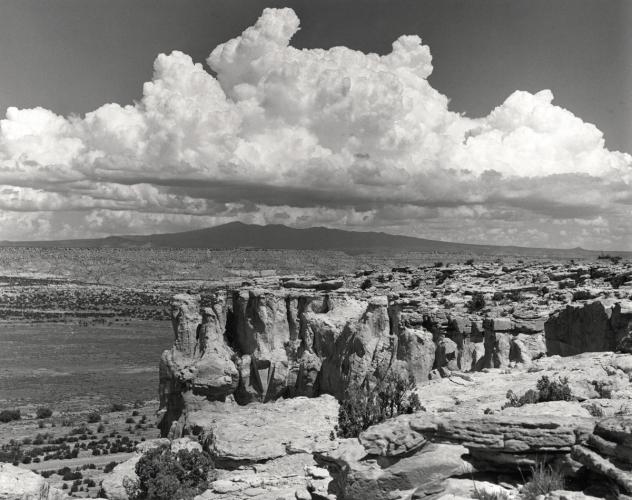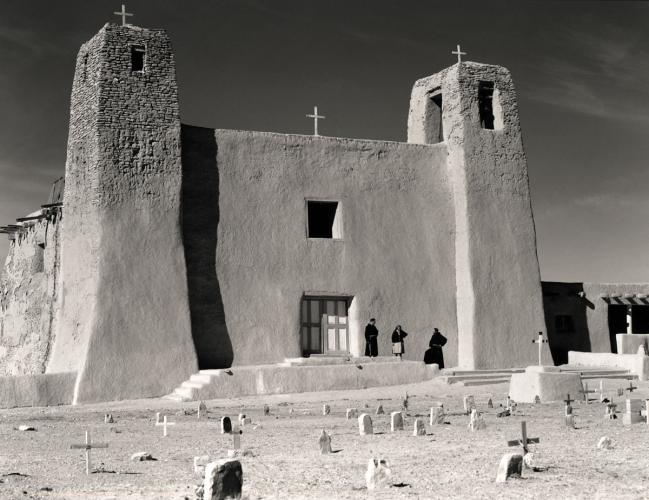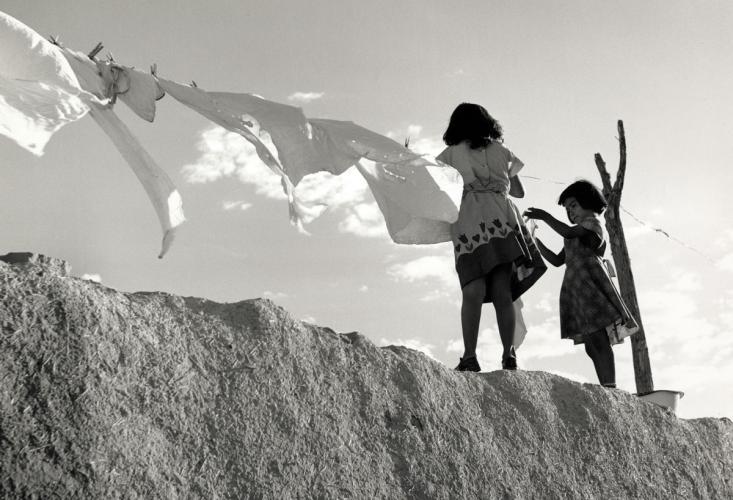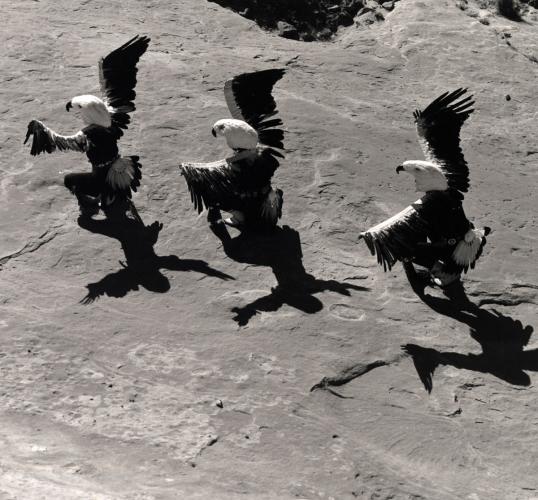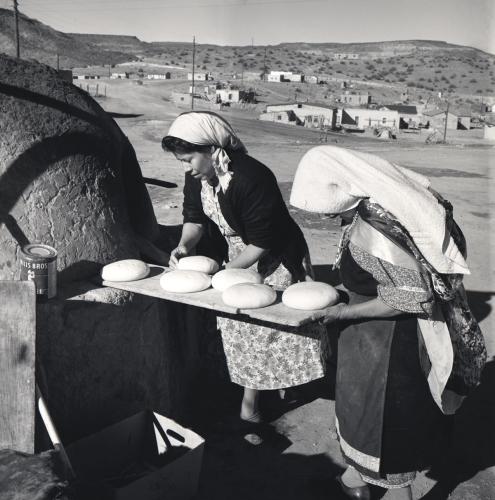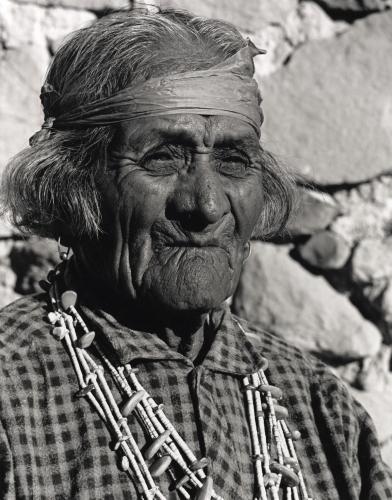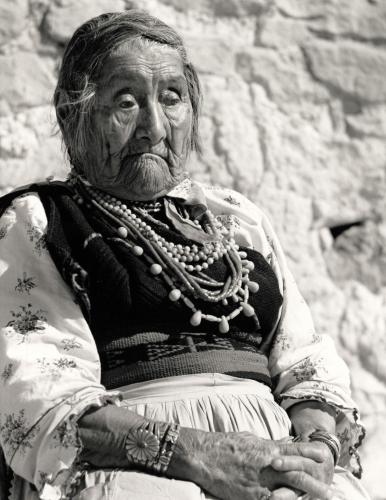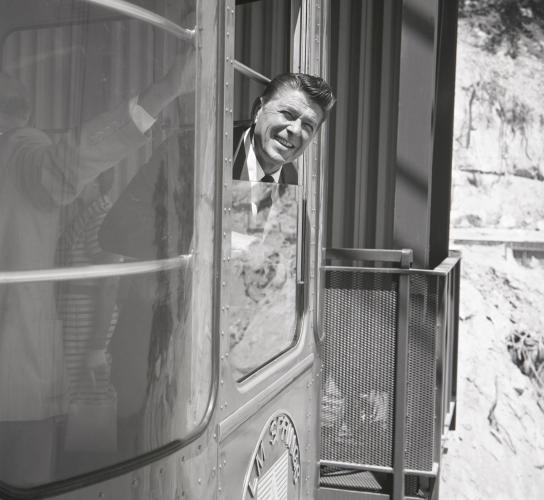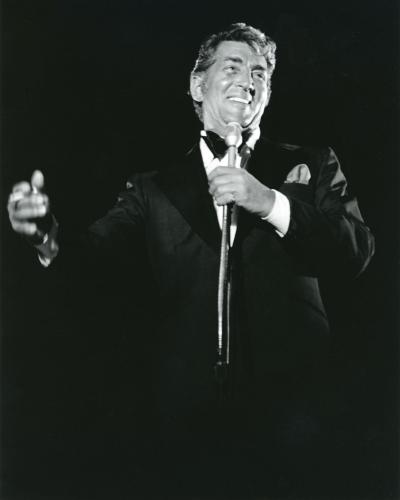Photography as a medium has since its inception preyed upon Native American people—exoticizing, stereotyping and capitalizing on their images. It is particularly suspect for Pueblo peoples of the American Southwest, who experienced a disruptive influx of photographers and then tourists starting in the late 19th century. When 11-year-old Leland Howard Marmon first picked up a camera to shoot a truck accident on Route 66 near his home at the Pueblo of Laguna in New Mexico, this seemingly simple act was quite significant. He would become one of the first professional American Indian photographers, and over his 60-year career, he would create an extensive yet intimate look at his community and homelands that upended the stereotypical ways non-Native photographers portrayed American Indian people.
Marmon was born in 1925 in an adobe house across the street from his parents’ trading post in Laguna village. His parents, Hank and Lillie Marmon, named him after railroad baron Leland Stanford and Howard Marmon, a distant relative who founded the Marmon Motor Car Company. Lee was the grandson of Robert G. Marmon, a surveyor from Ohio, and Marie Anaya from Laguna’s Paguate village.
Marmon was first introduced to photography as a young boy by his father, who began taking photos with a Kodak postcard camera in 1916. Hank may have been influenced by the many Euro-American photographers who came through the pueblo and stayed with his family in the late 19th and early 20th centuries, including Edward S. Curtis, Ben Wittick and Adam Clark Vroman. Their work, especially Vroman’s, greatly impacted Lee.
“I guess to a certain extent, my dad was the biggest influence,” Lee recalled when I interviewed him in 2000. “I think, in his younger days, he took a lot of pictures. We had a lot of pictures in this old Indian basket.” In her 1981 book, “Storyteller,” Lee’s daughter Leslie Marmon Silko described the old Hopi basket full of photographs taken and collected by her family and their significance to the history of her family and people.
After photographing the accident, it would be a decade before Marmon chose photography as his passion and career. In the meantime, he sold “all kinds of things” to make money, from copies of the Los Angeles Examiner and the Denver Post to salve and window cleaner. After running away from the Albuquerque Indian School and graduating from Grants High School, Marmon studied geology at the University of New Mexico beginning in 1942.
In 1943, the U.S. Army called. During World War II, Marmon was shipped off to Alaska and stationed on remote Shemya Island in the Aleutians. While there, he had an epiphany: “I was on that transport ship going into Seward, Alaska, and it was such a beautiful day. . . . I thought to myself, ‘My God, what a beautiful thing. I wish Mom and Dad could see this.’ [I] made a vow then: ‘When I get back home, I’m going to get [myself] a camera.’” While a sergeant major at the station hospital, Lee took a class on photography. After he returned home in 1946, he purchased his first camera: a 2 ¼ x 3 ¼ “baby” Graflex Speed Graphic, the same used by many newspaper reporters.
Marmon recalled his father encouraging him around 1947 to take photos of elders. “He said, ‘You ought to take pictures of some of these old-timers before they’re gone, so that we’ll have something—a picture to remember them by.’” So began Marmon’s legacy of portraits of his people and homelands, taken mostly from the late 1940s through the 1960s. As he delivered groceries for his father’s trading post, he photographed elders, asking permission and gifting them prints in return—he never charged elders a fee. He used the light in which he found them, without photographic reflectors; he relied instead on the naturally illuminating walls of the pueblo as an alternate light source.
Marmon was proud of his sharp focus and as-is approach to portraiture. Though he preferred to photograph elders as he found them, many asked him to return after they dressed in their best clothes and jewelry. Marmon photographed friends, relatives and community members and the places they lived, worshipped and wandered. Because he was a member of the community, he had exclusive access to his people. Most significantly, he was able to record dances that could not be photographed—or sometimes even seen—by non-Native people.
From 1967 to 1973, Marmon was the official photographer for the Bob Hope Desert Classic Golf Tournament in Palm Springs, California. He also took on other high-profile assignments for Time magazine and the Saturday Evening Post. In 1982, he returned to Laguna and took up residence in the old train depot on Route 66, given to him by his grandfather and remodeled as a home.
Marmon also photographed prominent Native American artists, including Chiricahua Apache sculptor Allan Houser and Santa Clara Pueblo potter Grace Medicine Flower. To many of his subjects, famous or not, Marmon was simply an old friend. He remembered Medicine Flower commenting during a session about posing in front of strangers, “I never can get my facial expression right with them, because I don’t feel comfortable. But with you, I know you so well.”
Lee’s interest in geology endured; his favorite subject was his New Mexico homelands. Though his best-known landscapes were taken in black-and-white, some of his most prominent were in color. “One thing about landscapes,” Lee observed, “there’s no medium. They’re either good or bad . . . and black and white sometimes doesn’t lend itself to quality landscapes here in New Mexico where we have so much color.” His beloved Marmon family land southwest of Laguna at Dripping Springs was a frequent theme in his photographs and stories.
Beyond his artistic talent and generous personality, Marmon was a professional storyteller. Ask, and he would relate a story about any one of the tens of thousands of photographs he created over his 60-year career. His most famous, “White Man’s Moccasins,” has a layered story, both in what is pictured and its name. As Lee tells it, he came upon Jeff Sousea in the Laguna plaza on a summer day in 1954, sitting in the sun as he often did, telling tourists tall tales. Marmon asked for a photo, but Sousea refused. After delivering groceries, Lee tried again, this time offering a cigar as a trade. Finally, Sousea agreed to pose for the shot that has become Marmon’s signature image worldwide.
Yet “White Man’s Moccasins” wasn’t the original title. Marmon named it “Old Man Jeff,” but when he began to sell the image on a poster, a friend in Palm Springs recommended a more popular name. “So I decided to call it ‘White Man’s Moccasins’ because so many people said, ‘Why isn’t he wearing moccasins?’” The two names reflected his two audiences: one who wouldn’t find an old Laguna man in Keds anything but normal, and another who expects a stereotypical portrayal rather than an everyday moment of the contemporary life that Native people lead. The humor of the photograph lies in the mockery of a trope.
Marmon considered his true audience to be his Laguna community that he loved. “If you get with some Lagunas and start showing pictures,” he reflected, “immediately they come alive again. People telling stories and reminiscing, and how they knew them. Then . . . they get to where they start telling funny stories. And that really was the goal that I had.” The photographs he took evoke memories, made indelible by his camera.
On March 31, 2021, Lee Marmon passed away at age 95. His oeuvre of between 65,000 and 90,000 photographs was purchased in 2009 by the Center for Southwest Research at the University of New Mexico. His is currently one of the most accessed collections at the center. “It’s great people all over like my work,” reflected Lee, “but I did it primarily for the people of Laguna, so we wouldn’t forget these people.”
Photographer Lee Marmon (Laguna Pueblo, 1925–2021) captured an intimate look at his New Mexico Pueblo people and homeland during his influential 60-year career.

